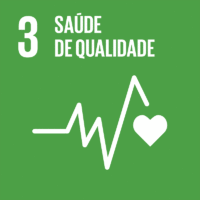Ciência_Iscte
Publicações
Descrição Detalhada da Publicação
Título Revista
Axioms
Ano (publicação definitiva)
2023
Língua
Inglês
País
Suíça
Mais Informação
Web of Science®
Scopus
Google Scholar
Esta publicação não está indexada no Overton
Abstract/Resumo
We obtain an analytical solution for the time-optimal control problem in the induction phase of anesthesia. Our solution is shown to align numerically with the results obtained from the conventional shooting method. The induction phase of anesthesia relies on a pharmacokinetic/pharmacodynamic (PK/PD) model proposed by Bailey and Haddad in 2005 to regulate the infusion of propofol. In order to evaluate our approach and compare it with existing results in the literature, we examine a minimum-time problem for anesthetizing a patient. By applying the Pontryagin minimum principle, we introduce the shooting method as a means to solve the problem at hand. Additionally, we conducted numerical simulations using the MATLAB computing environment. We solve the time-optimal control problem using our newly proposed analytical method and discover that the optimal continuous infusion rate of the anesthetic and the minimum required time for transition from the awake state to an anesthetized state exhibit similarity between the two methods. However, the advantage of our new analytic method lies in its independence from unknown initial conditions for the adjoint variables.
Agradecimentos/Acknowledgements
--
Palavras-chave
Pharmacokinetic/pharmacodynamic model,Optimal control theory,Time-optimal control of the induction phase of anesthesia,Shooting method,Analytical method,Numerical simulations
Classificação Fields of Science and Technology
- Matemáticas - Ciências Naturais
Registos de financiamentos
| Referência de financiamento | Entidade Financiadora |
|---|---|
| 2022.03091 | Fundação para a Ciência e a Tecnologia |
| UIDP/04106/2020 | Fundação para a Ciência e a Tecnologia |
| UIDB/04106/2020 | Fundação para a Ciência e a Tecnologia |
Contribuições para os Objetivos do Desenvolvimento Sustentável das Nações Unidas
Com o objetivo de aumentar a investigação direcionada para o cumprimento dos Objetivos do Desenvolvimento Sustentável para 2030 das Nações Unidas, é disponibilizada no Ciência_Iscte a possibilidade de associação, quando aplicável, dos artigos científicos aos Objetivos do Desenvolvimento Sustentável. Estes são os Objetivos do Desenvolvimento Sustentável identificados pelo(s) autor(es) para esta publicação. Para uma informação detalhada dos Objetivos do Desenvolvimento Sustentável, clique aqui.

 English
English


